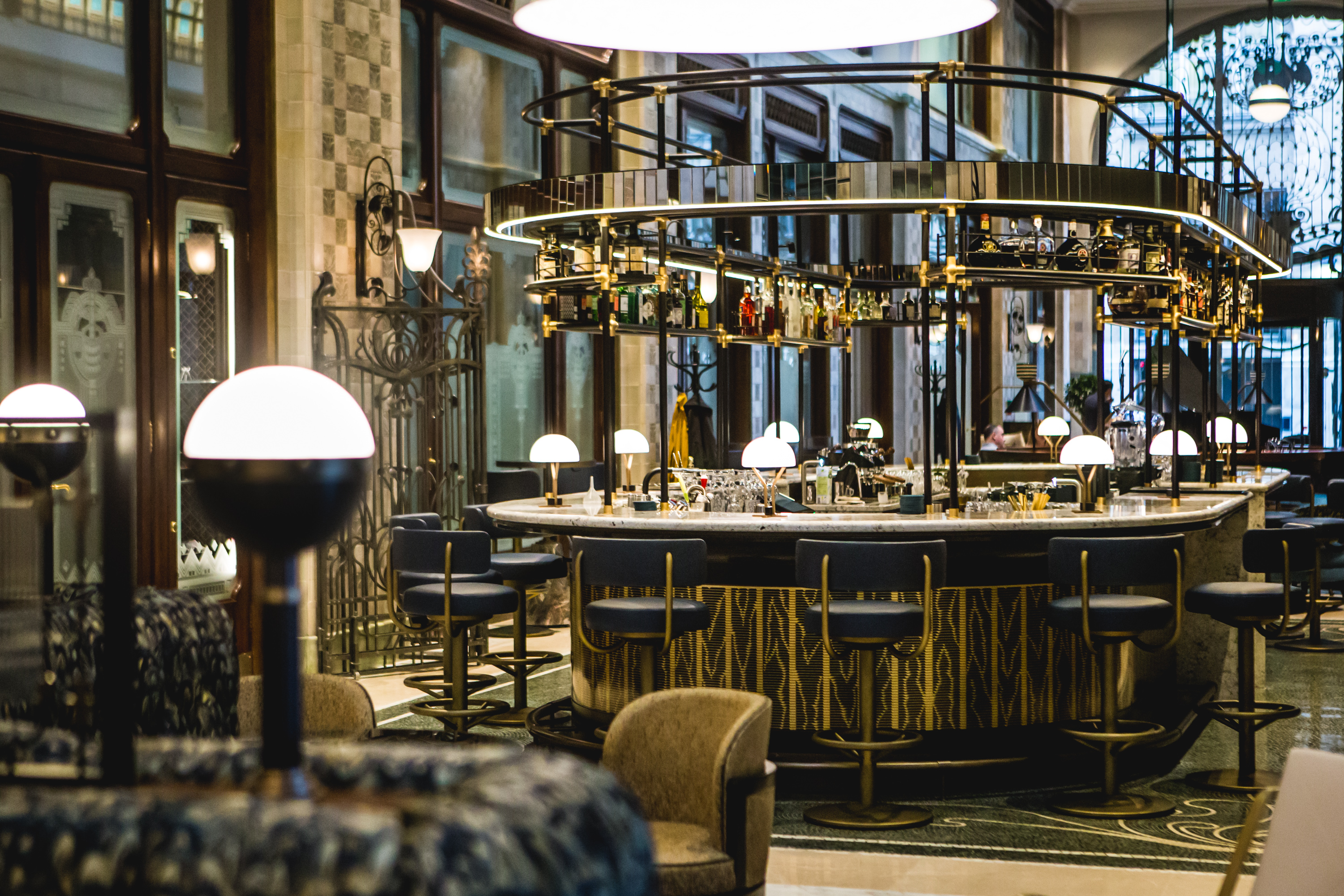Múzsa has moved more than just the entire layout of the Gresham Palace lobby as it was planned, defined, refined and executed over these last three years. It reshapes cocktail drinking in Budapest. Inspired by the same muse that charmed the creators of the original Gresham Palace and its heirs a century later, the current overseers aimed to stay faithful to her legacy while striving for serious global recognition.
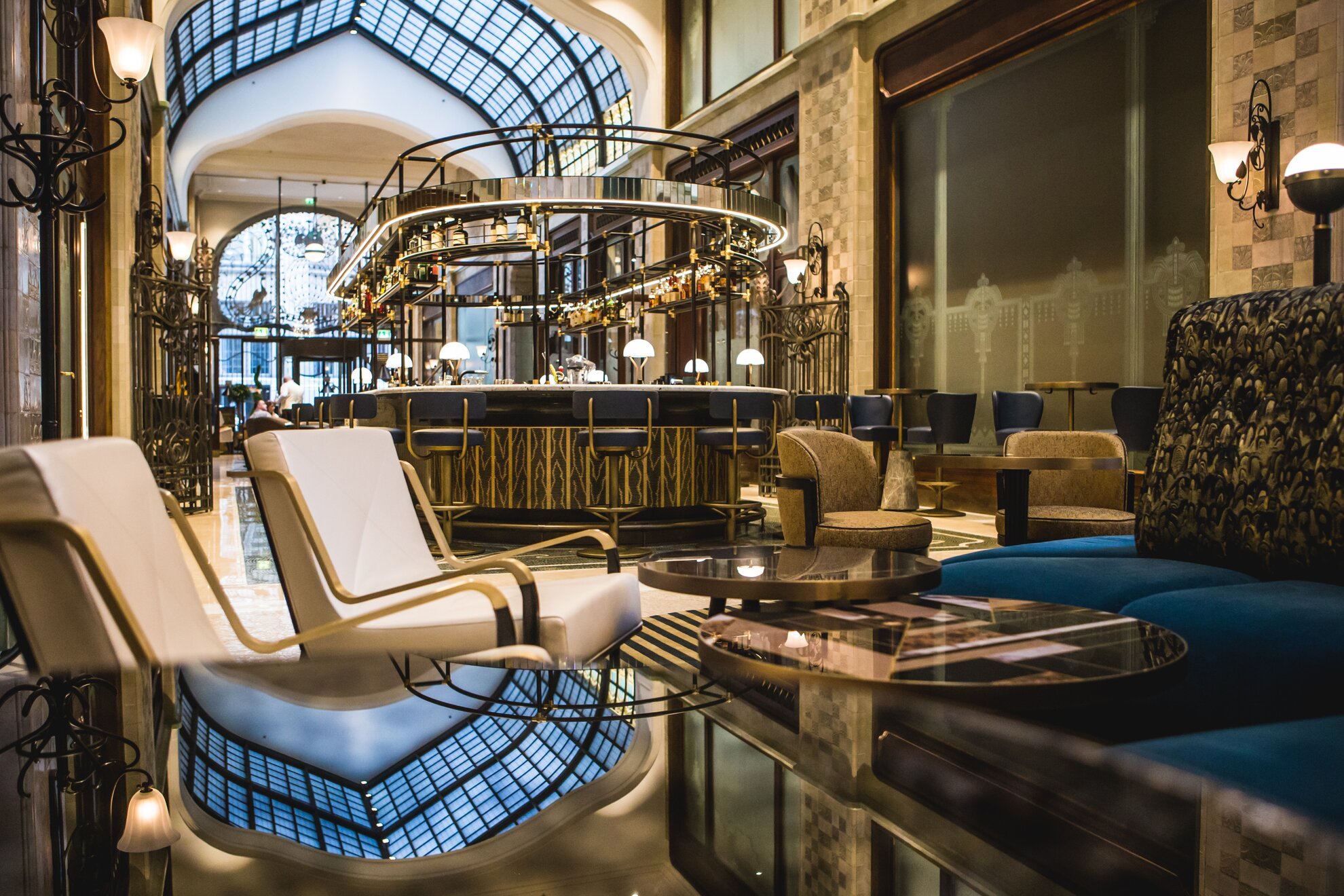
The aim has been to create a bar in keeping with Gresham’s past, present and future. (The cocktail list was conceived in similar vein, but we’ll get to that shortly.) The creative femininity of the muse should complement the masculine force of the in-house KOLLÁZS Bar & Brasserie, Bocuse d’Or-winning chef Árpád Győrffy crafting the cuisine in each. Forget warmed olives, think yellow fin tuna tartare.
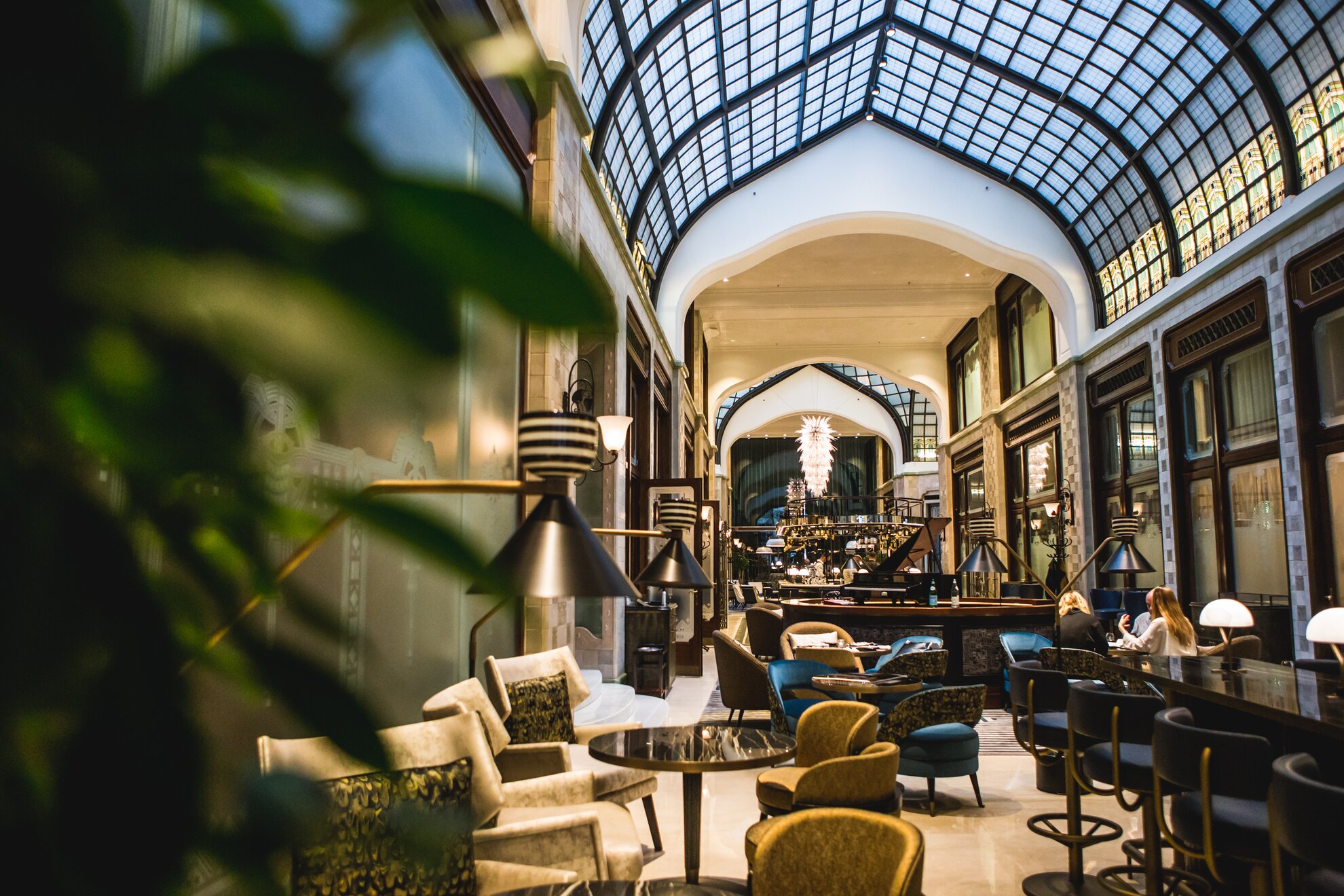
The hotel’s reception desk has been set to one side as Múzsa takes over much of the space, filling a whole wing and requiring its own separate entrance from Mérleg utca, the adjoining side street awaiting pedestrianisation.
Within, facing wings lead to a wine-tasting room and, for expert staff only, a laboratory for molecular mixing. Here a rotary evaporator, the roti as it’s now familiarly referred to by head barman Ádám Rédli, is a rare sight behind the scenes of any high-end cocktail bar.
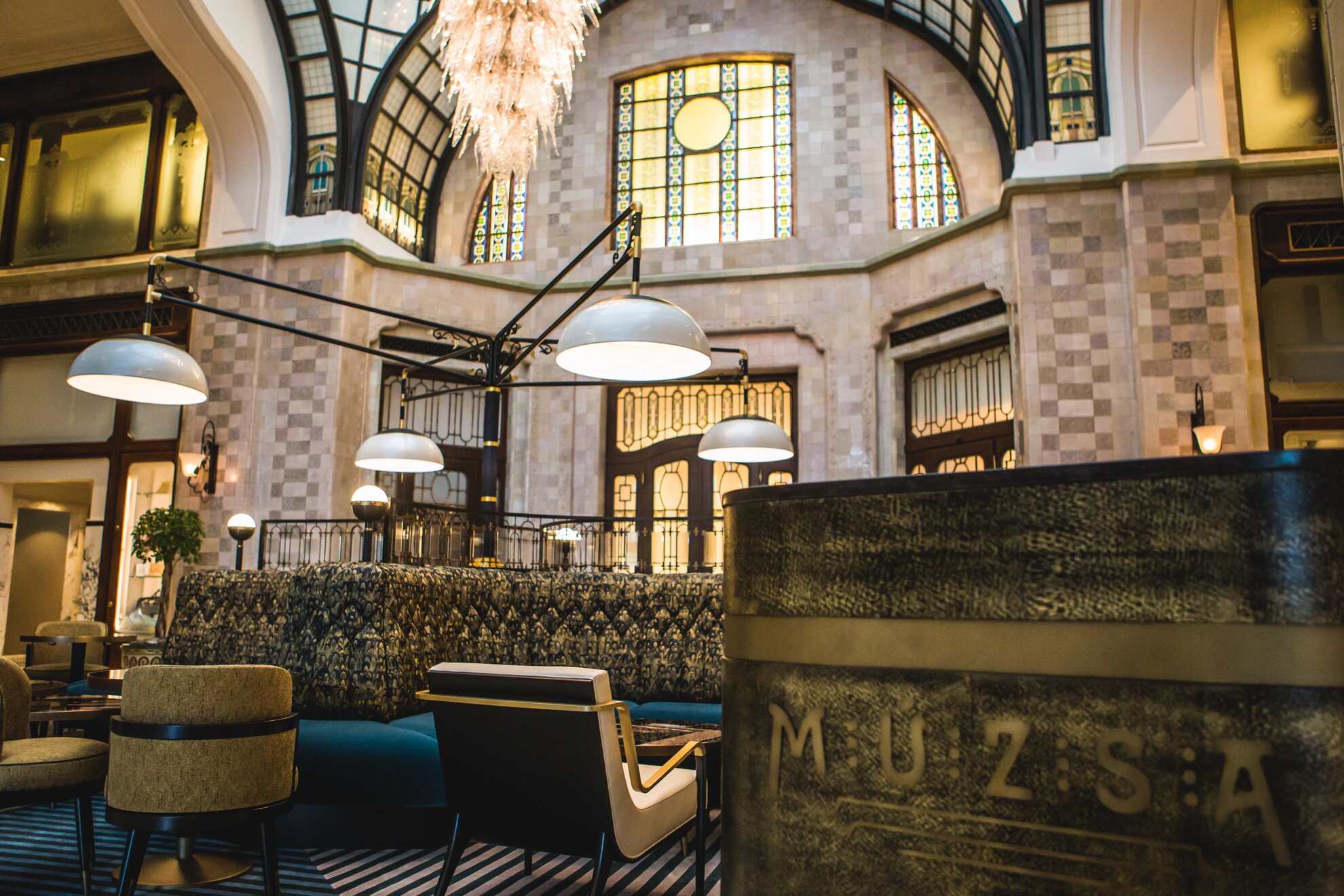
Where guests once checked in, cocktail sippers now recline under a magnificent Preciosa chandelier, admiring the stained glass of famed fin-de-siècle master Miksa Róth and the wrought-iron work of his contemporary, Gyula Jungfer. Upon the handmade Art-Nouveau mosaic floor, pre-war cabarets were once staged, an element now up for further consideration. The spirit of play is another underlying facet at work here.
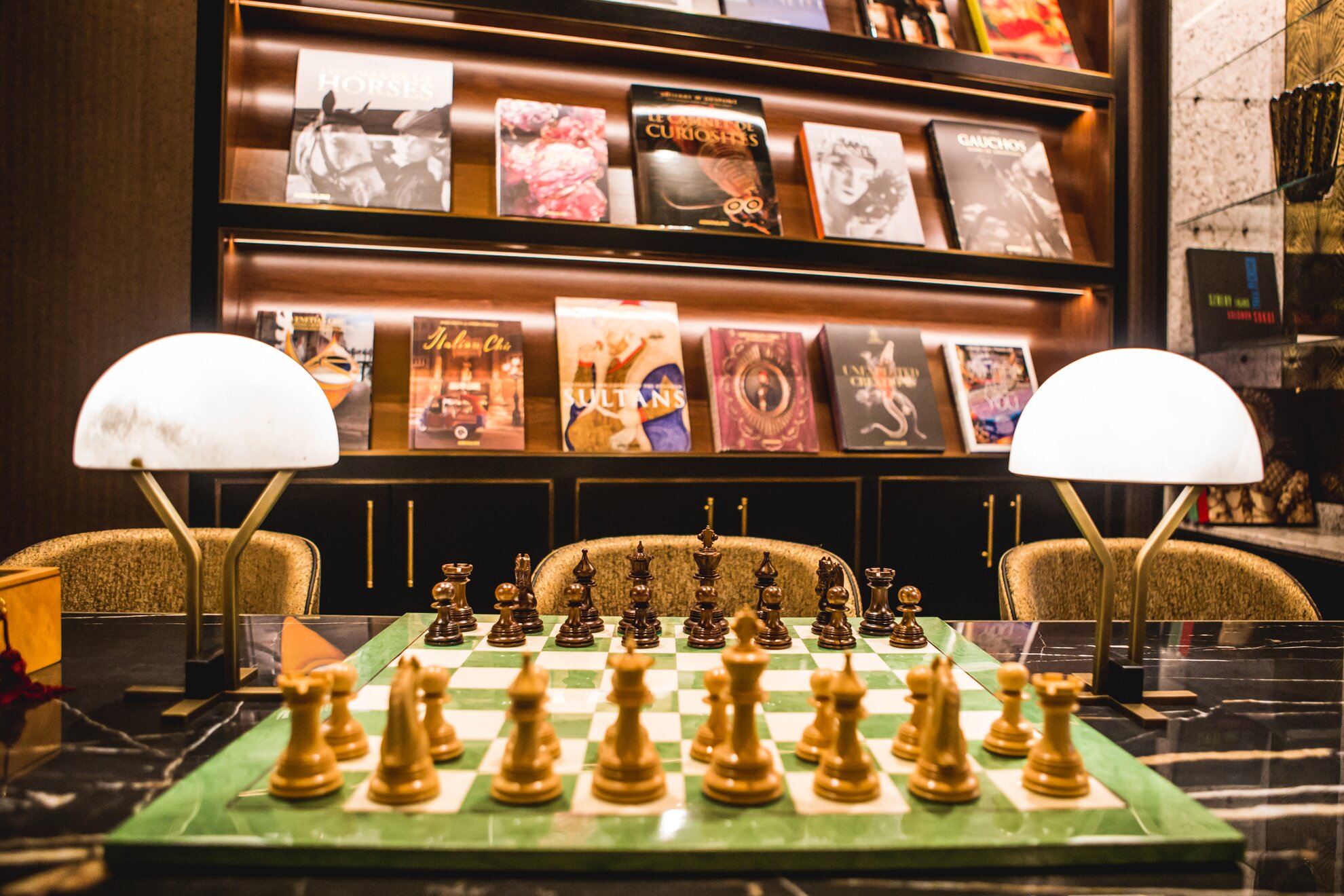
As you approach the maître d’s podium of distressed gold, embossed with the five letters of Múzsa in a 1930s’ font, to one side gleam the veneered tables of the concierge library, bearing the weight of elegant volumes (The French Riviera of the 1920s, The History of Tokaji) and a stately House of Staunton chess set. Of which, again, more later, only in cocktail form.
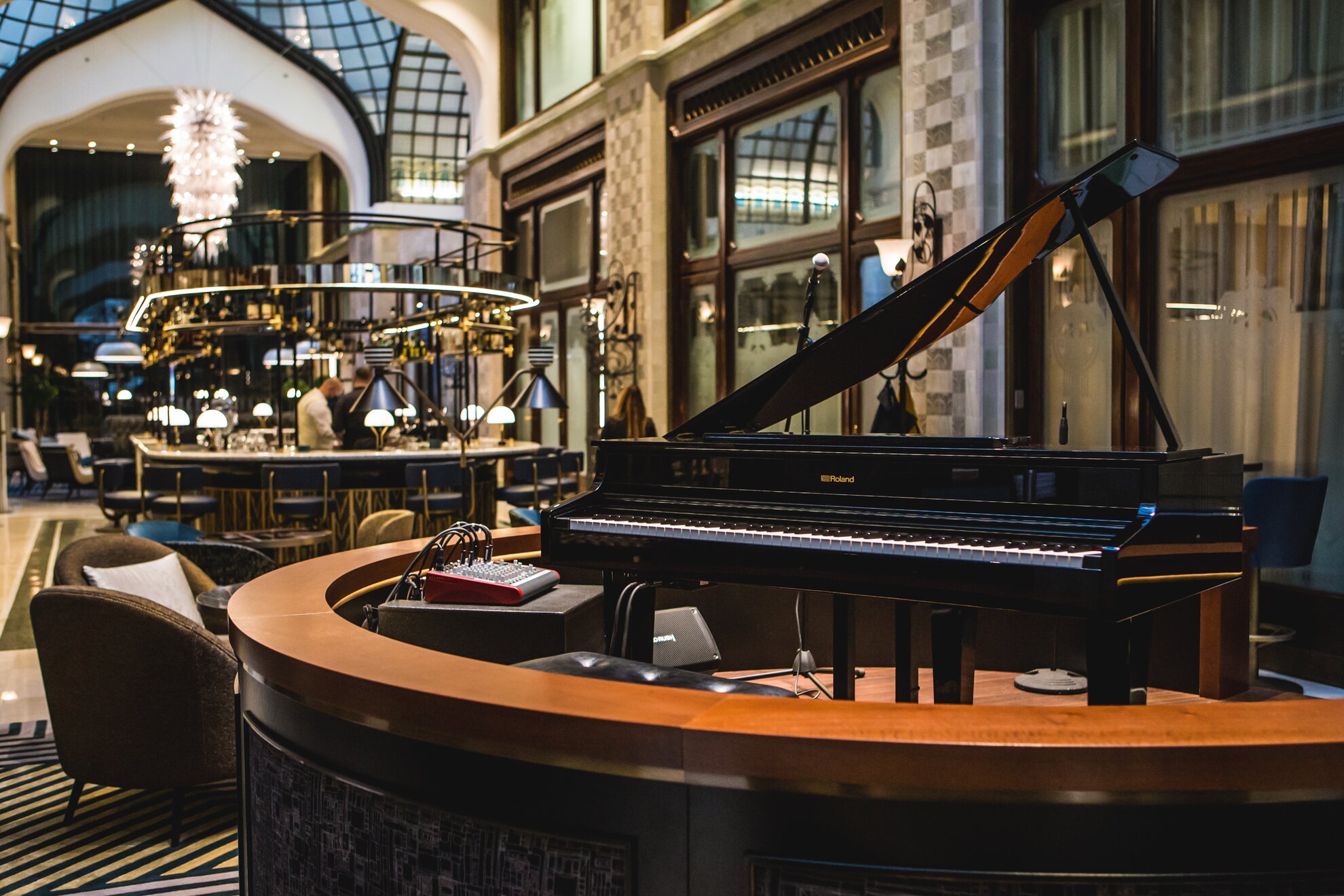
Behind the podium and between the wings, an island bar luxuriates in a sea of gleaming brass, understated browns of matching hues and period light fittings, backdropped by the Gresham’s elegant peacock gate and the aforementioned side entrance. A K Kawai piano awaits afternoon guests.
This is the realm of Ádám Rédli, creator of the 15 signature cocktails while following the spirit of the Muse, a journey he unwittingly started at The Langham. In the hotel where Hollywood stars do lunch and Artesian is regularly crowned World's Best Bar by Drinks International, surrounded by London’s largest single collection of rums, Ádám was inducted into the guild of mixing.
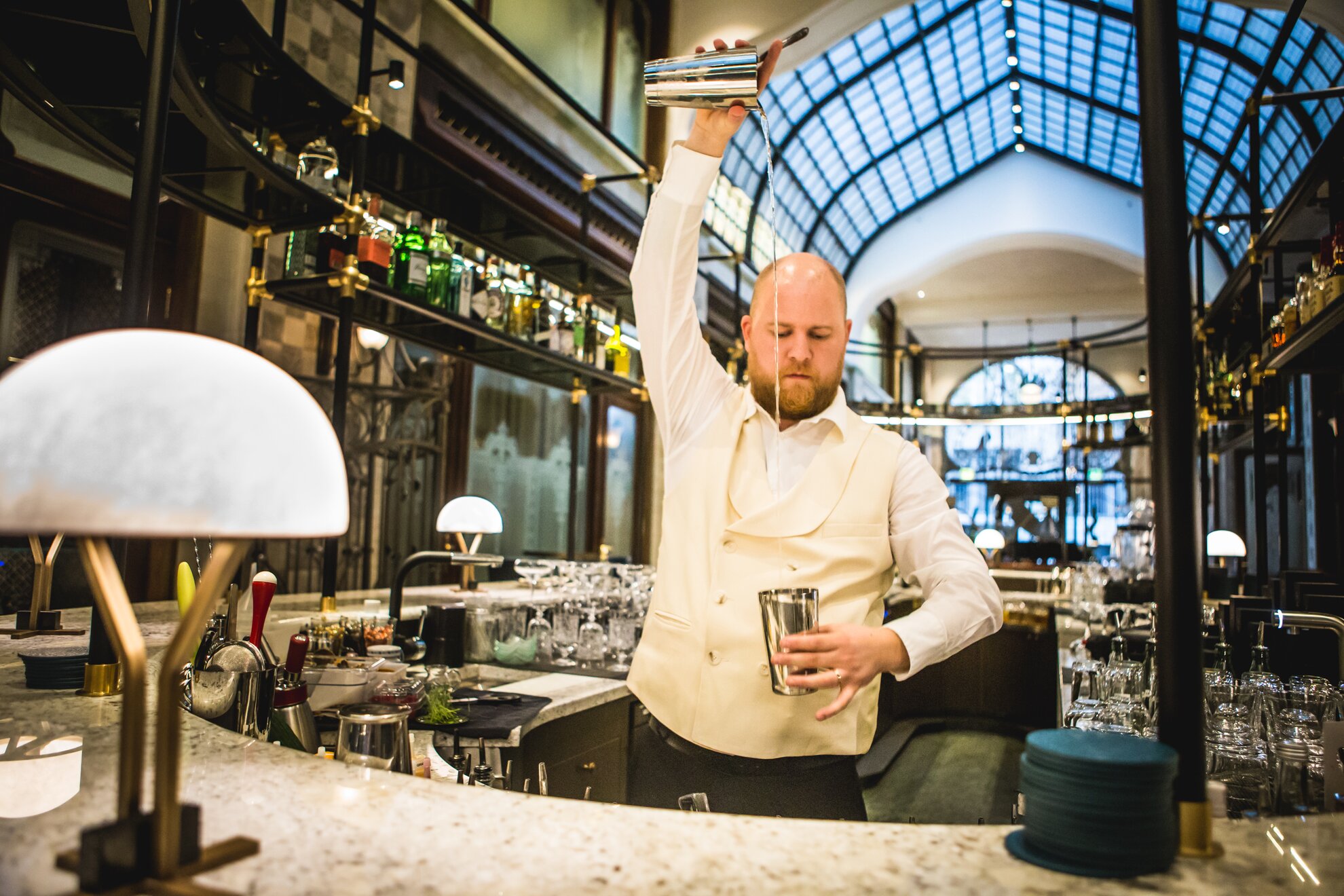
Here his task was to combine three eras into 15 bespoke glasses, keeping the muse in mind and sourcing ideas from the history and landscape of Hungary – with a little Asian undertow to the Danube that flows immediately outside the Gresham’s grandiose façade.
Simply put, the menu divides into past, present and future – but this no simple menu, rather a work of art in itself. Drawings depict each era in flowing Beardsleyesque lines, each drink with its own story, components, delicate illustration and price tag (3,700-6,200 HUF).
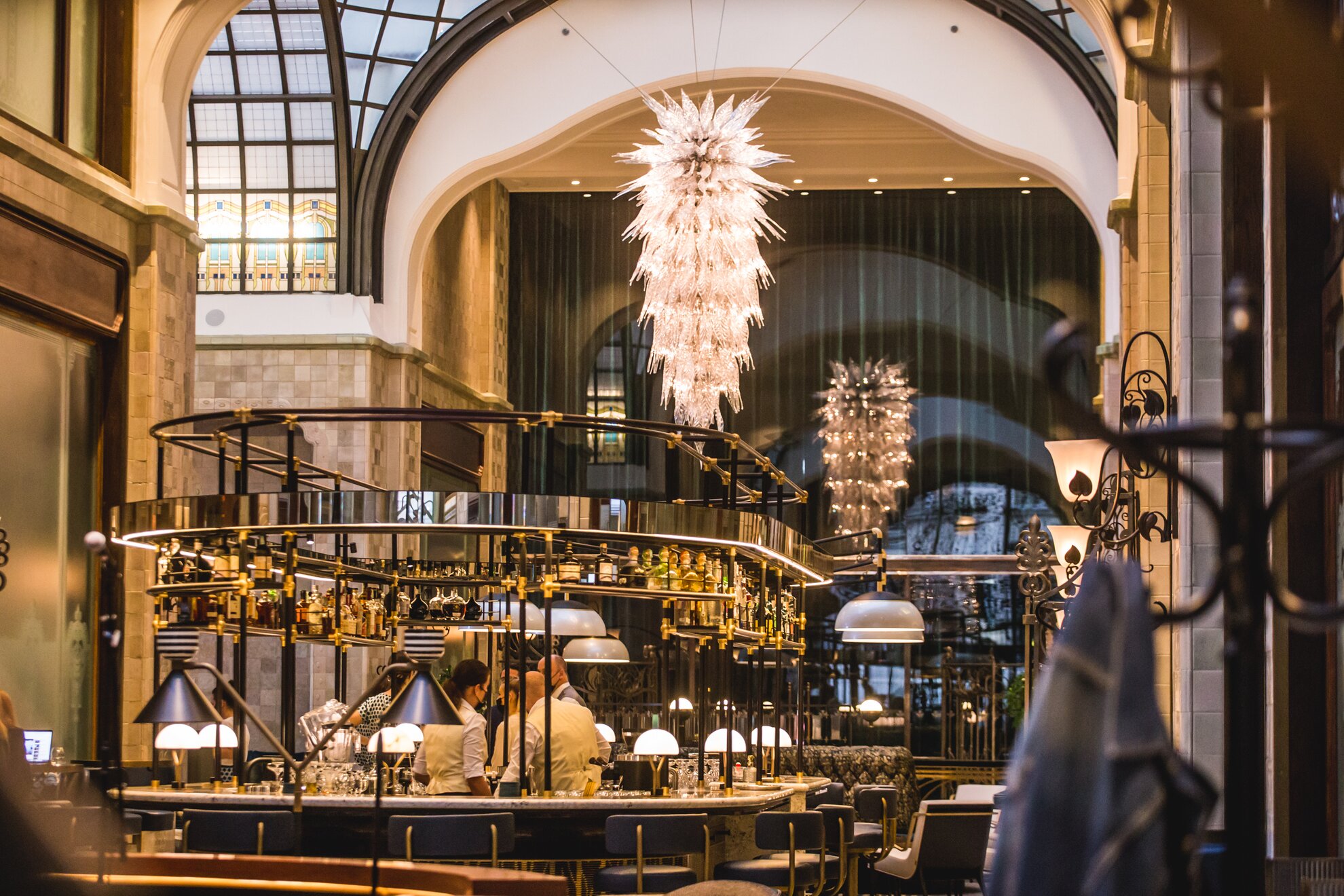
These eras – ‘The Origins’, ‘The Golden Age’ and ‘Age Nouveau’ – run from the Hungarians’ first arrival on the Puszta, and equally Hungary’s first ever cocktail recipe, to the fin de siècle of Gresham legend, and beyond to an uncertain future inspired by the Muse. That’s the idea, anyway. And the drinks? Divine.
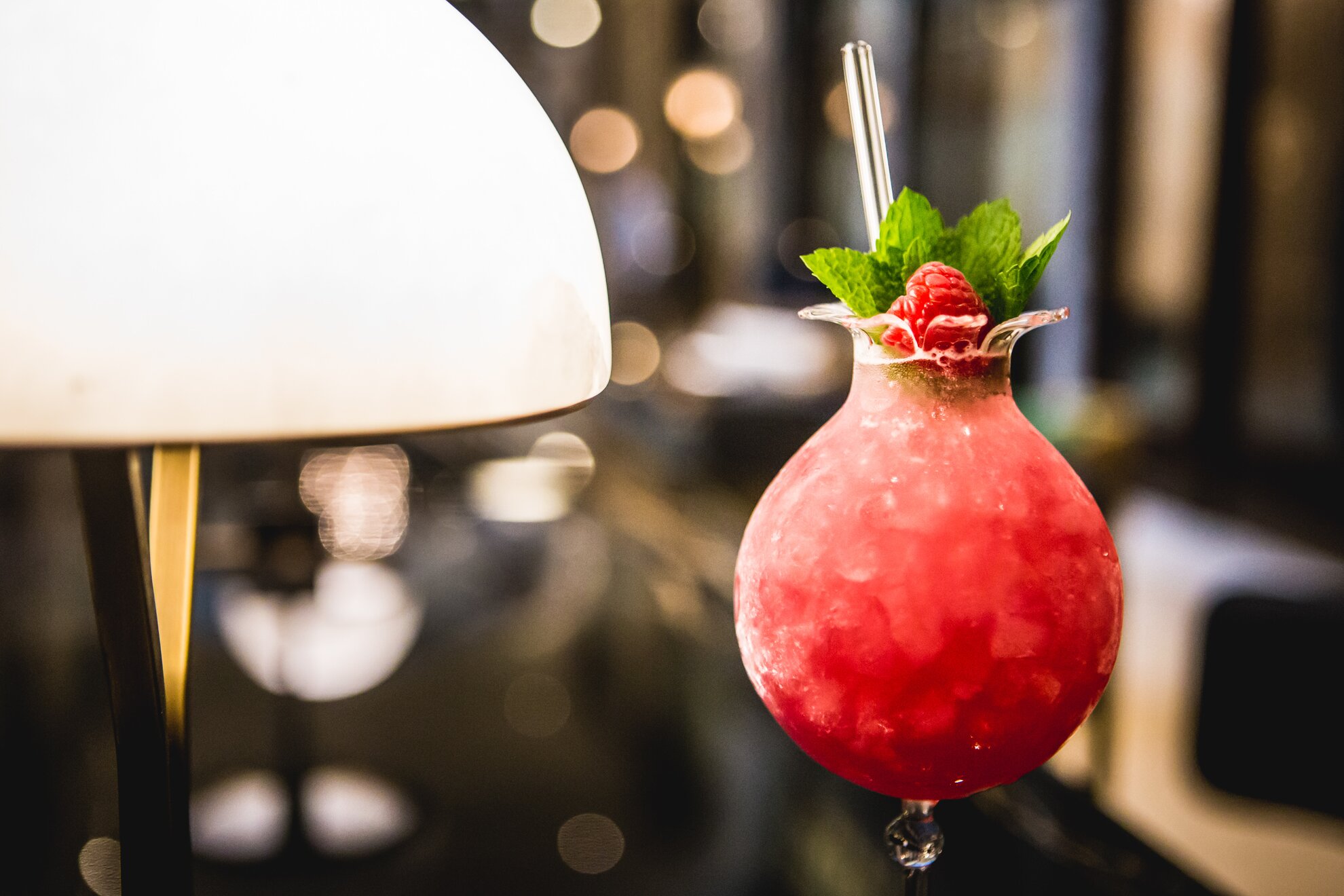
Poured into glasses of mainly local Varga crystal, with stems as long as the nape of a princess, shapes as distinctive as a poppy or bottoms as deep as the Danube, Ádám’s painstakingly crafted cocktails certainly inspire and amuse.
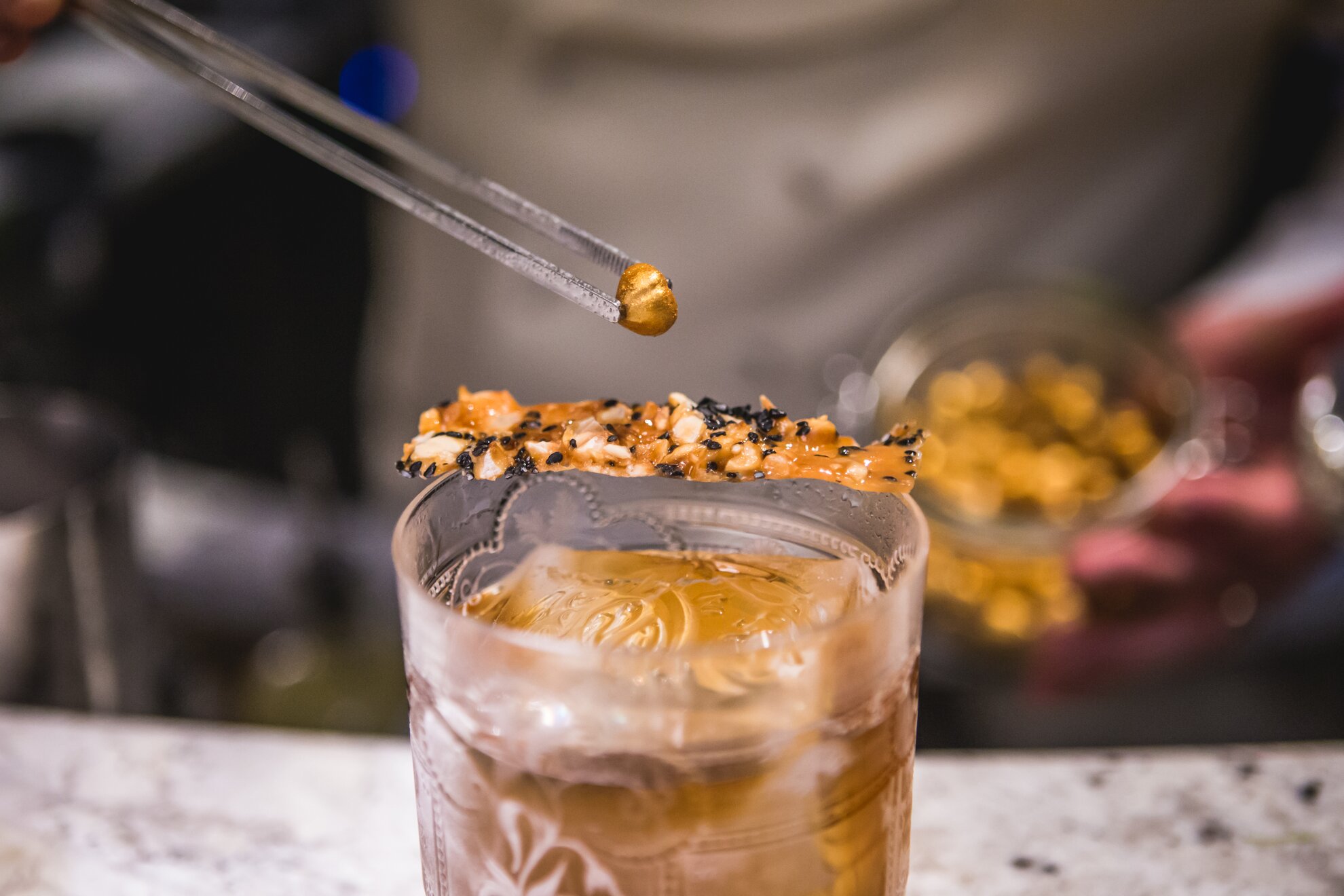
Poured and even set fire to, in fact, for the Flame of Senses is presented with its own magic show, as would have been enjoyed by audiences here a century ago. A sesame wafer is set alight for a split second, gone in a flash to reveal… well, let’s not spoil the surprise, but perhaps the most striking curiosity here is the Hungarian whisky, a single malt from Agárd. Throughout, in fact, domestic connections are key.
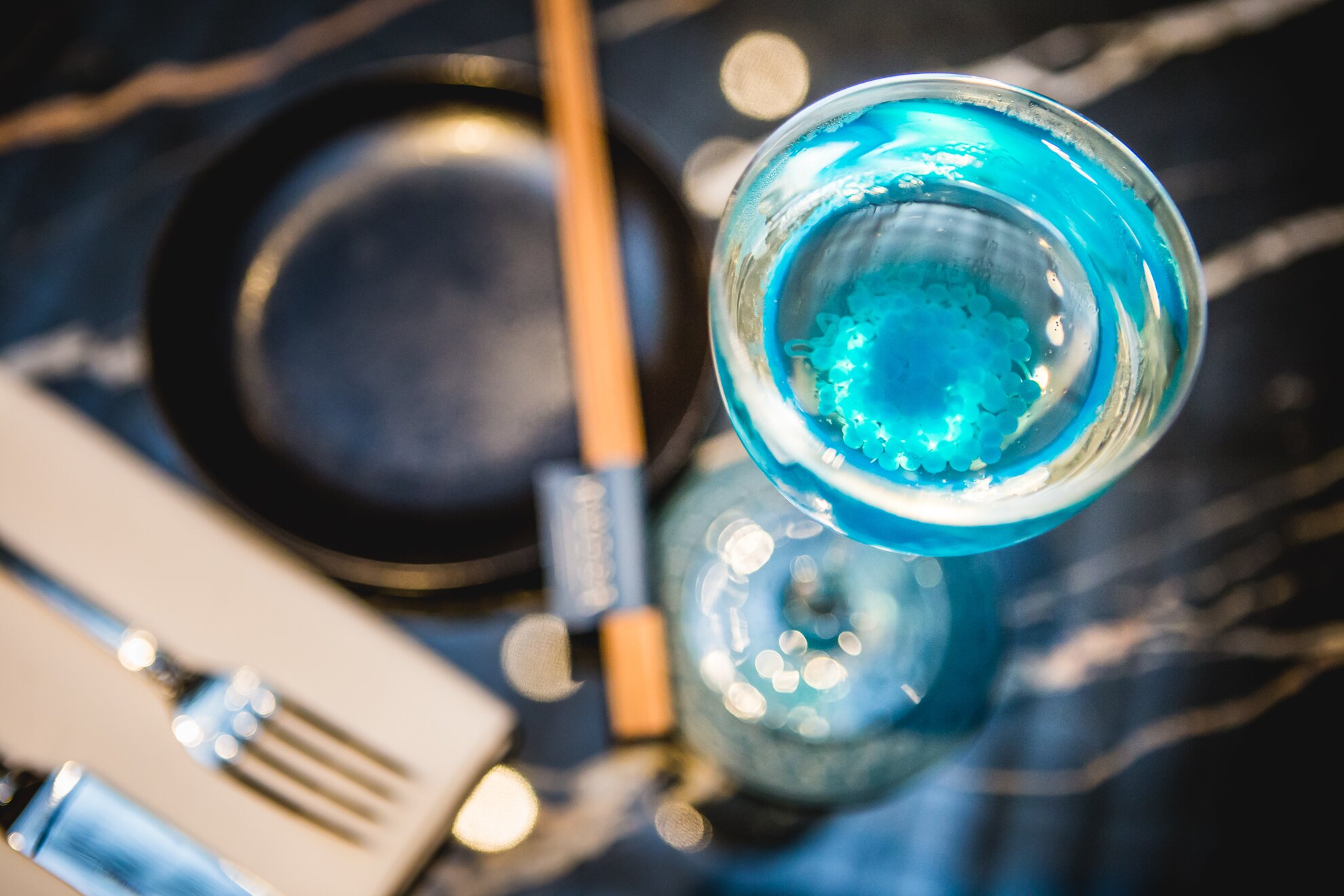
Buda Hills, its namesake viewed from the Gresham’s Danube-facing windows, sprinkled with the sideritis founding growing wild all over them, is a light, fluffy, lemony concoction packed with the prime punch of Ketel One vodka. Danubian Path, an ‘umami-savoury-molecular’ drink from the Age Nouveau, is the confluence of sake and Tokaji aszú, given zing by Diplomático Planas white rum.
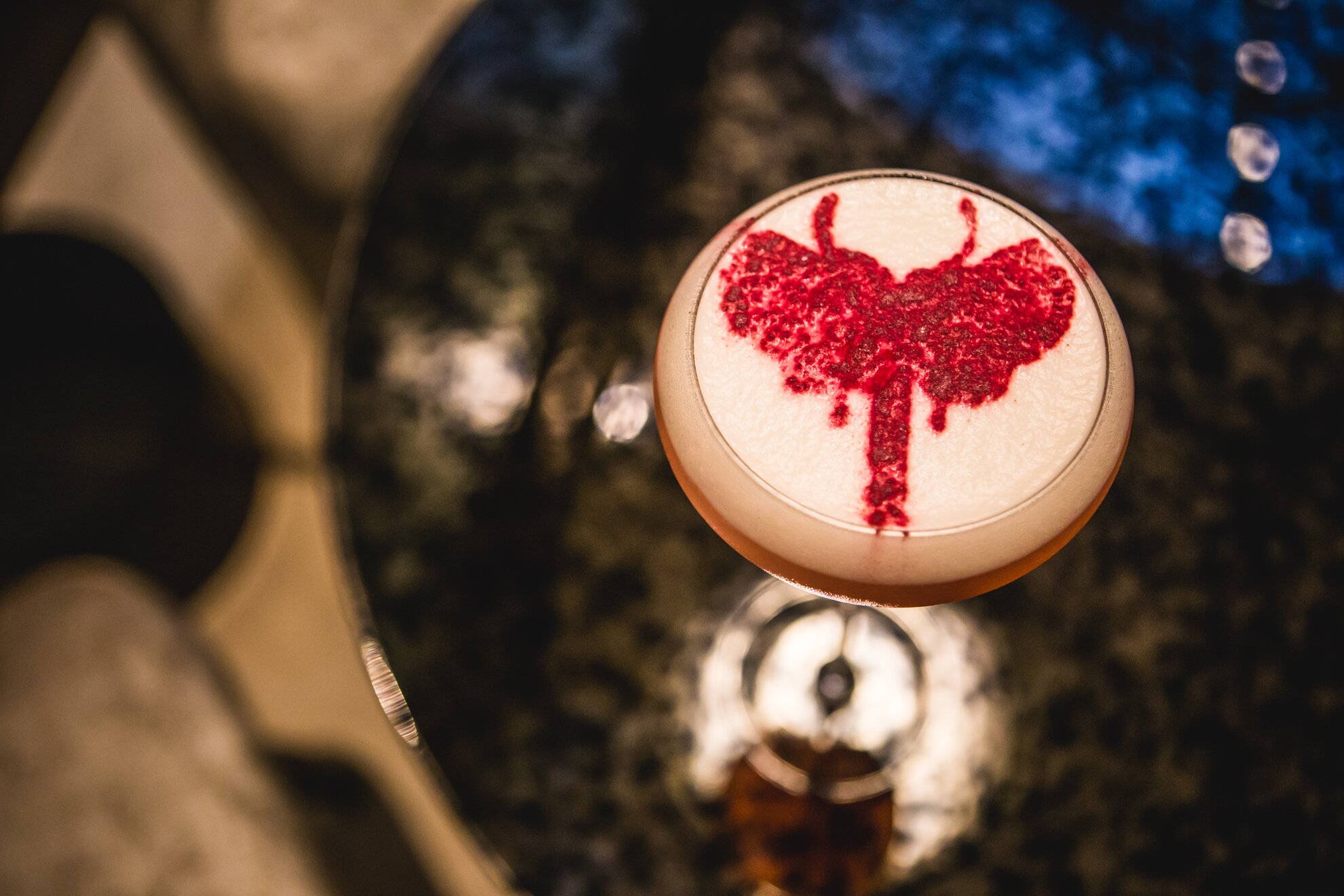
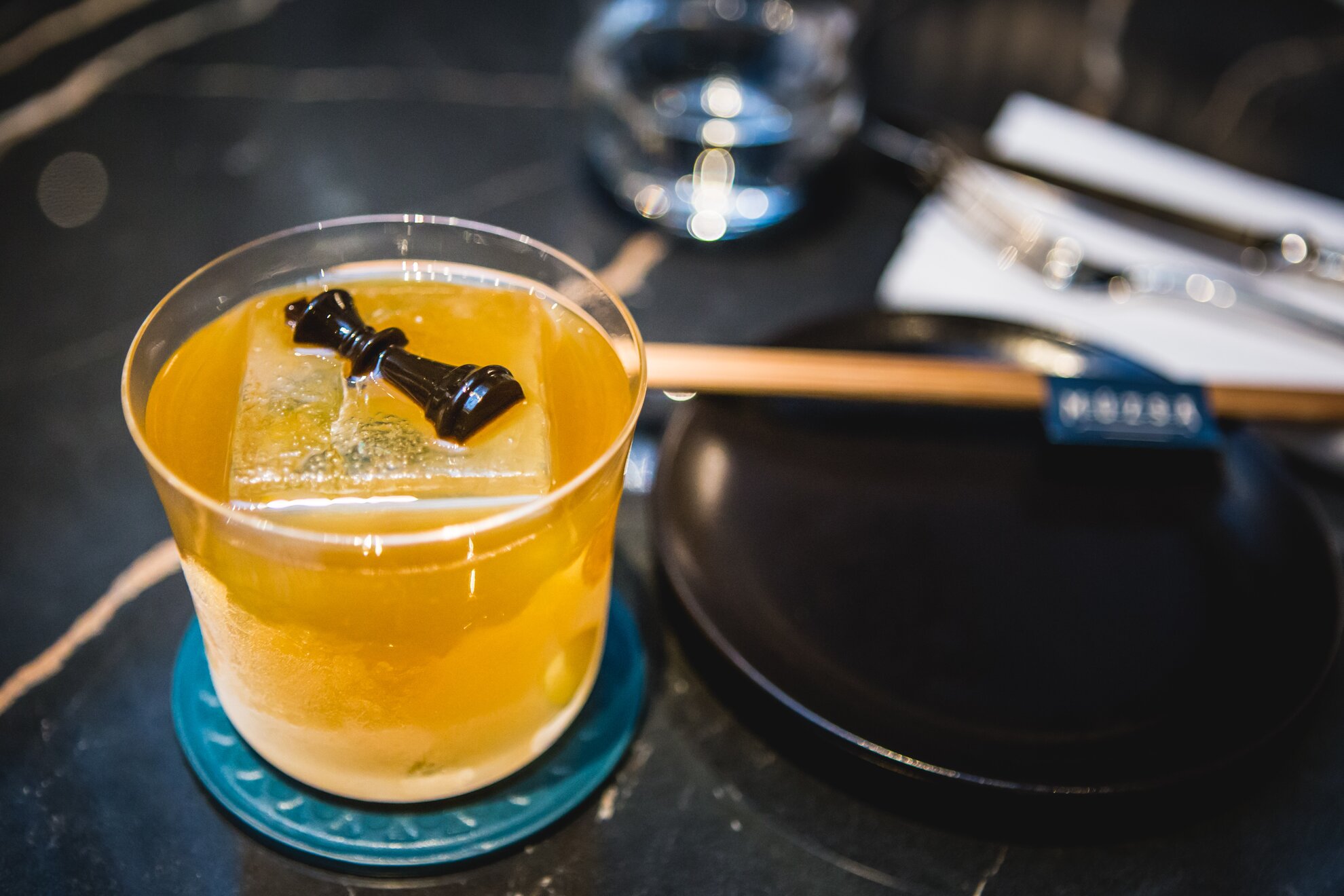
Tiszavirág, taking its name from the mayfly of the Tisza river that rises and dances for one day each year, is long of stem and glamorously red in colour, from the raspberry flavouring the Tanqueray 10, the vivacious, fleeting creature drawn on the head of the drink. Then there’s that edible chess piece steeped in Tokaji and set atop a miniature iceberg awash with Diplomático Exclusiva dark rum, ginger and turmeric….
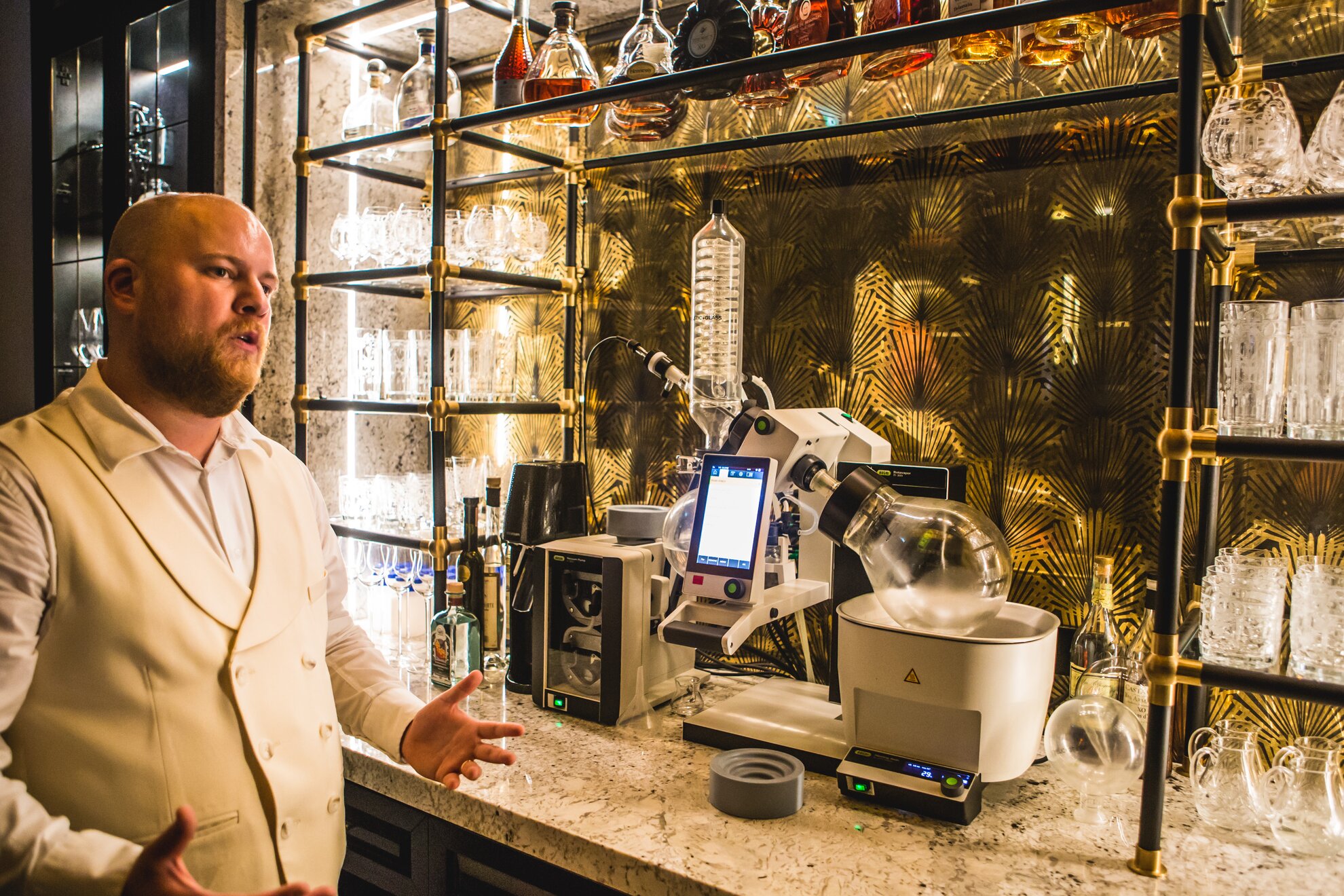
Clearly, this is no place to order a margarita and hope for the best and a bill of 2,000 forints. Yes, of course, the staff can mix pretty much whatever you’d like, but these are Western prices for what is, essentially, a world-class experience.
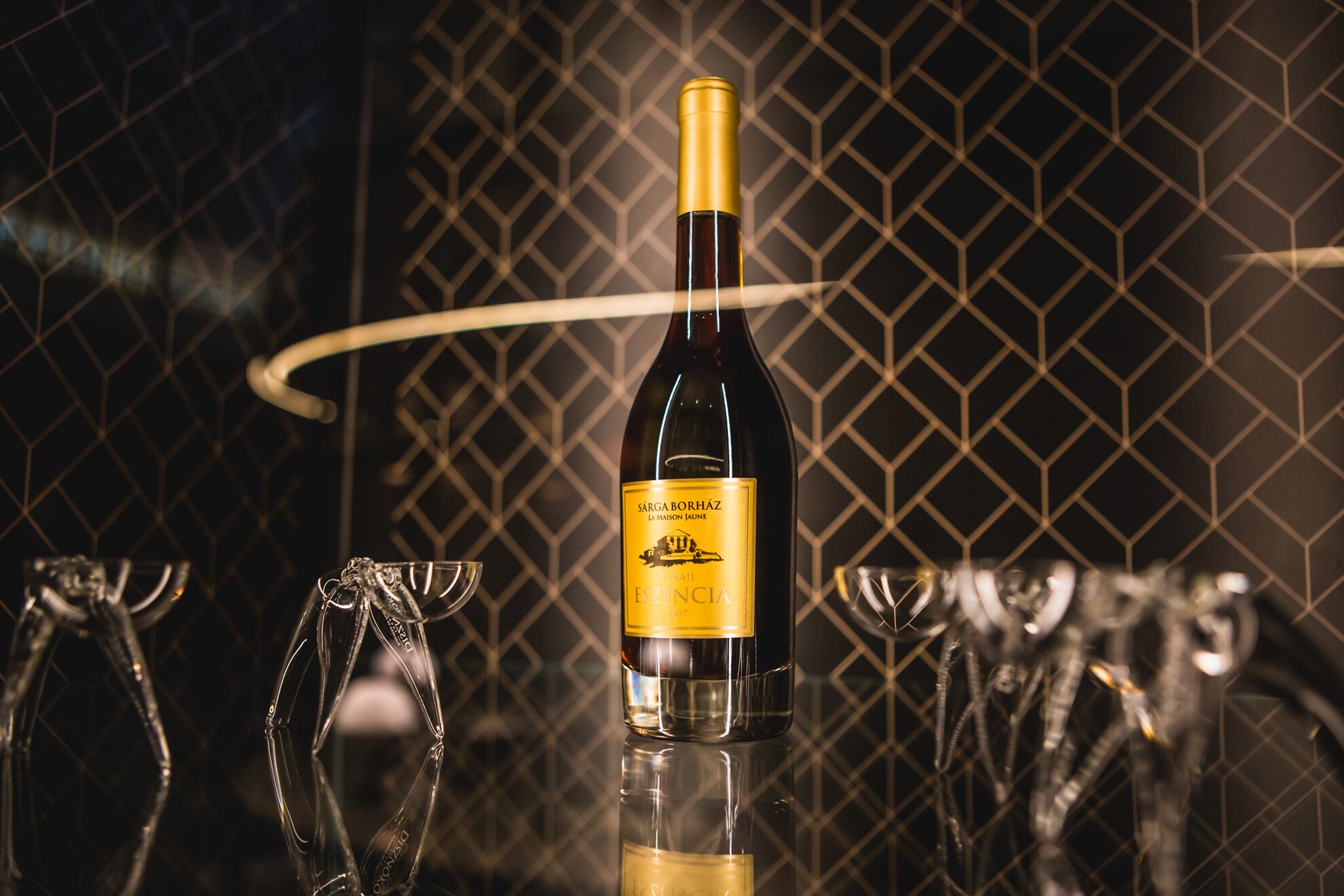
And one, given the circumstances, the Gresham is encouraging Hungarians to enjoy, perhaps perusing the 1912 Tokaji on display (or asking one of the staff to show them the Zwack and pálinka rarities on view in the wine-tasting room). Revisiting their own heritage has been a positive by-product of Hungarians reclaiming their capital by dint of the tourist drought.
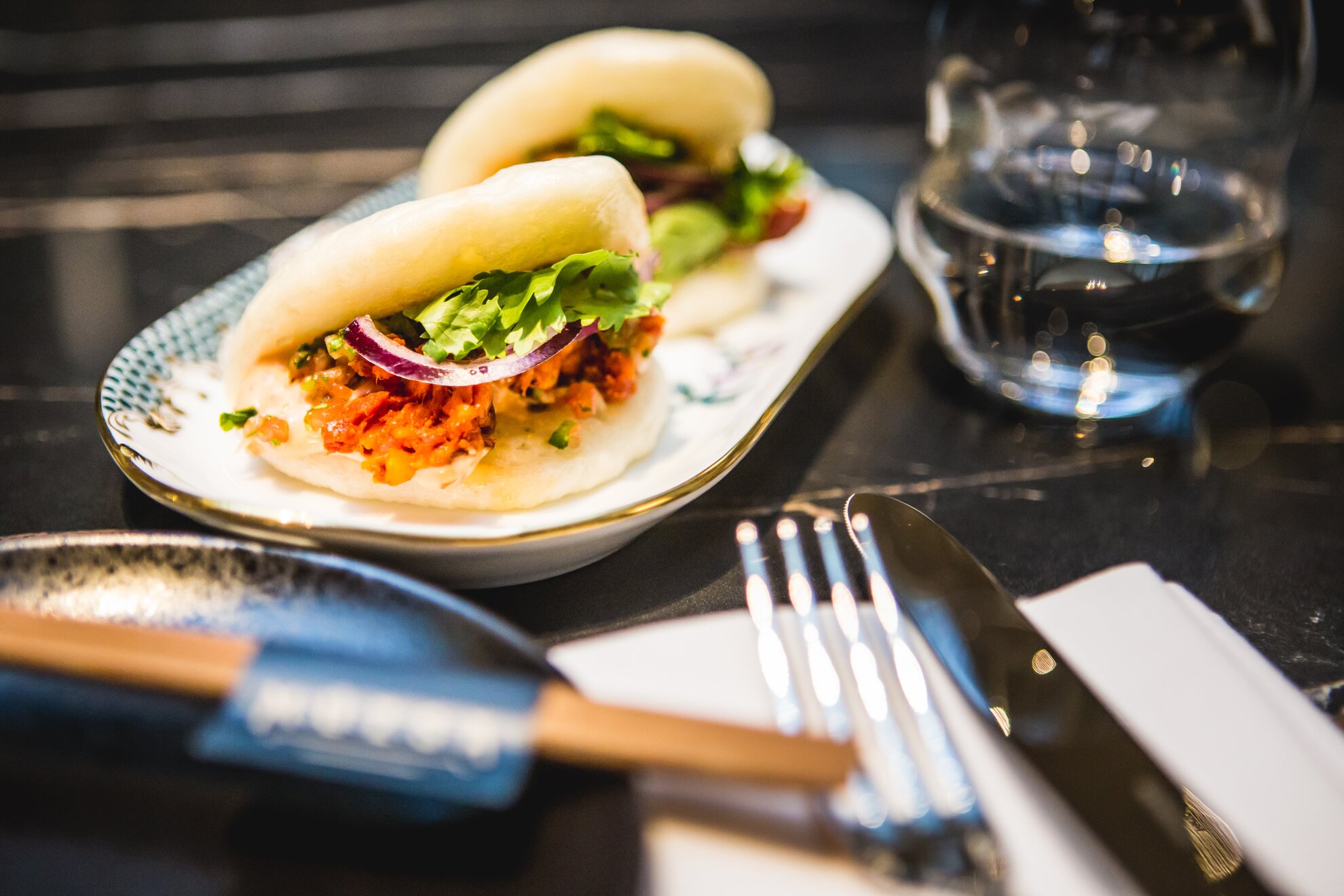
À propos, food. Some set on bespoke Herend porcelain, the ten Múzsa’s Creations (1,500-6,500 HUF), three Secrets (1,100-4,500 HUF) and three Pleasures (2,100-2,300) created by Árpád Győrffy insert a little more Oriental exoticism into the East-West equation. A basic yet tasty illustration would be edamame dusted with Transylvanian grey salt, but the house-made bao bun stuffed with Hungarian mangalica sausage is a more substantial example, and filling with it.
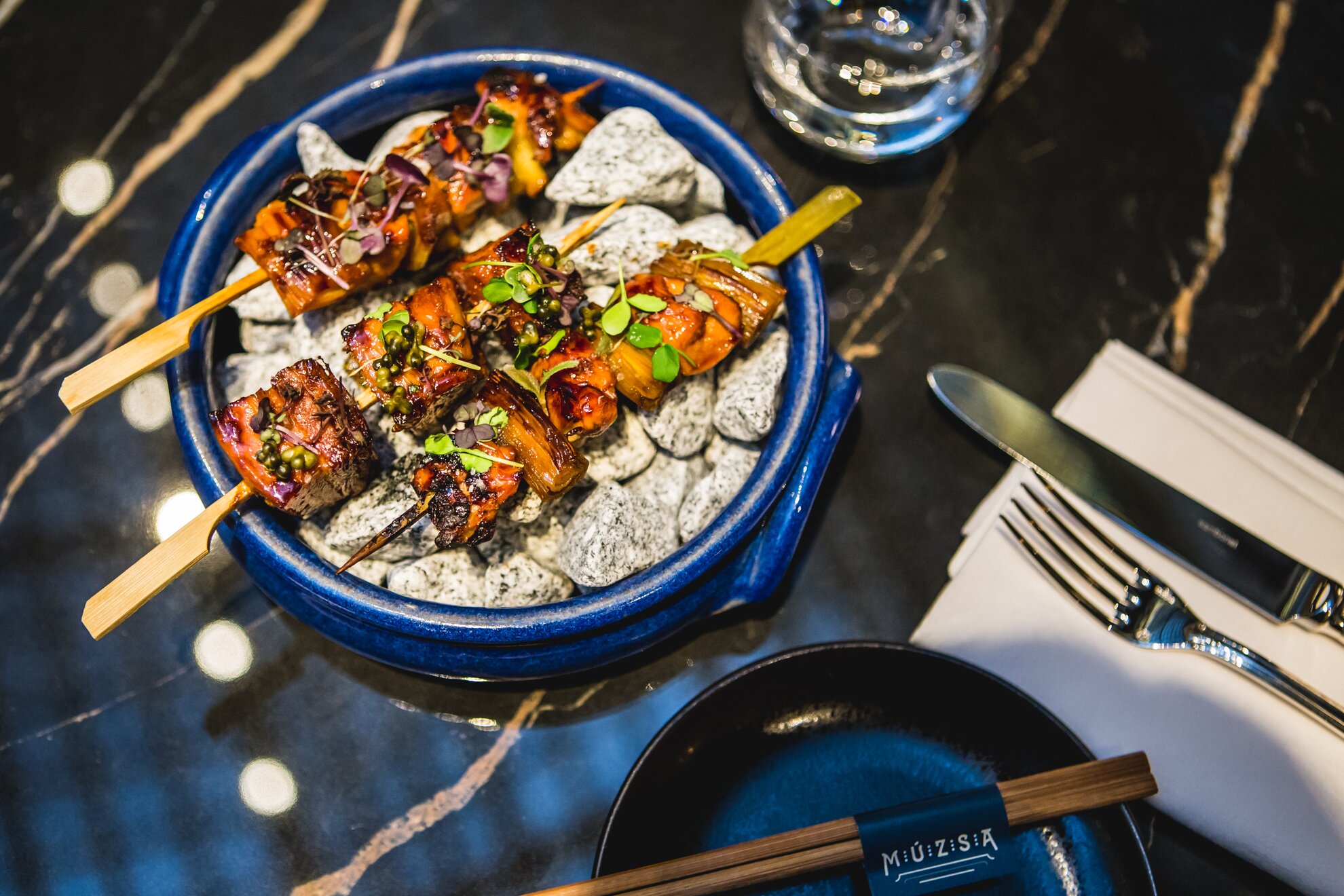
Here the charcoal yakitori of chicken, shio koji marinated pork or seasonal vegetables is not only laid in a hot dish (mind your fingers!) resembling a country-house fireplace, but is prepared robata-style, ‘fireside’ for sake of brevity and fashionable in Japan. There’s even Wagyu steak. Oh, and a direct telephone line to the Herend (and Varga glass) manufactory in case you took a shine to what you saw.
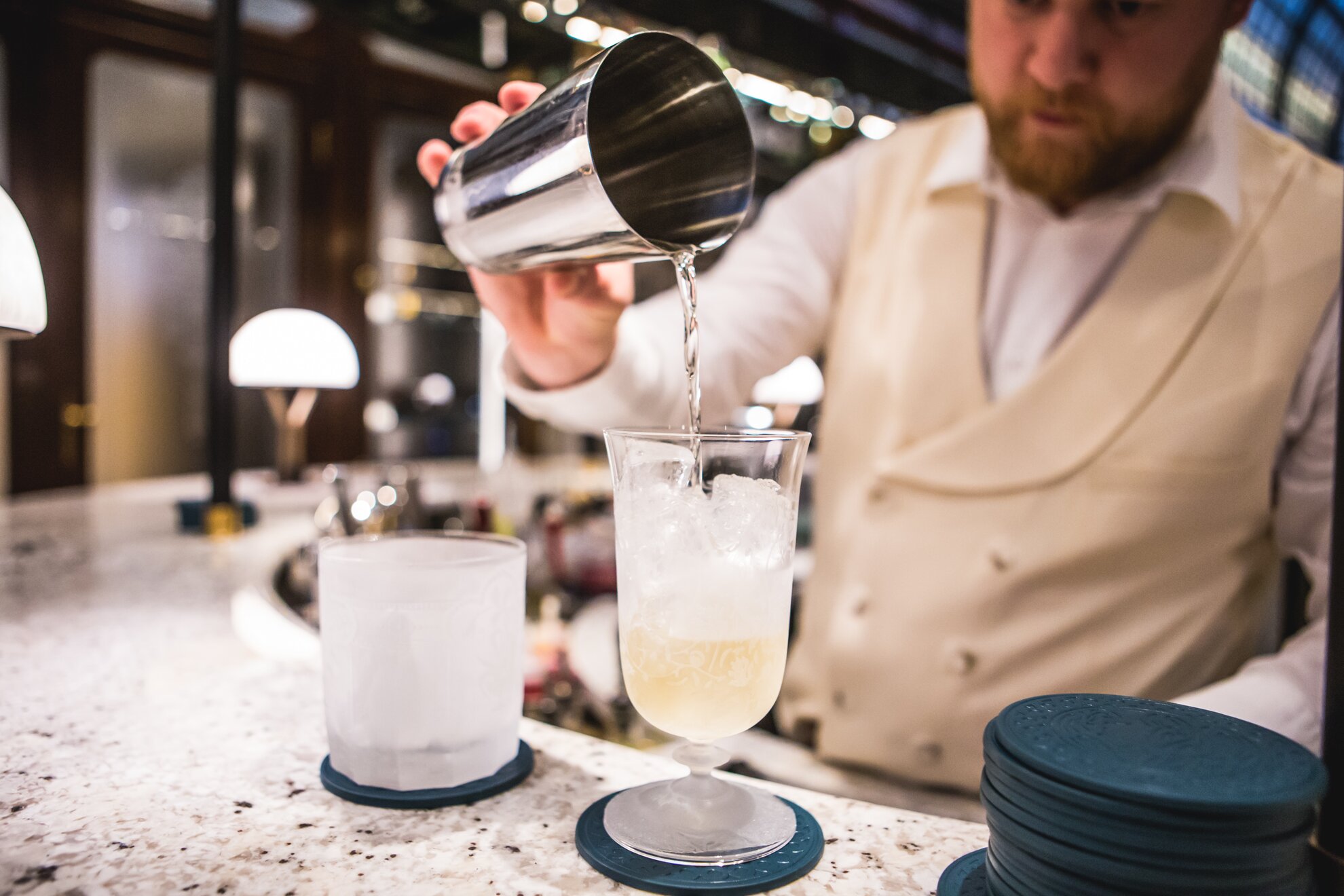
The wine list, the pálinka range and spirits menu are encyclopaedic yet painstakingly selected, and even the background music (are you listening, every other bar in Budapest?) has also been curated by someone whose job it is to curate music. A programme of entertainment is promised. That K Kawai piano awaits.
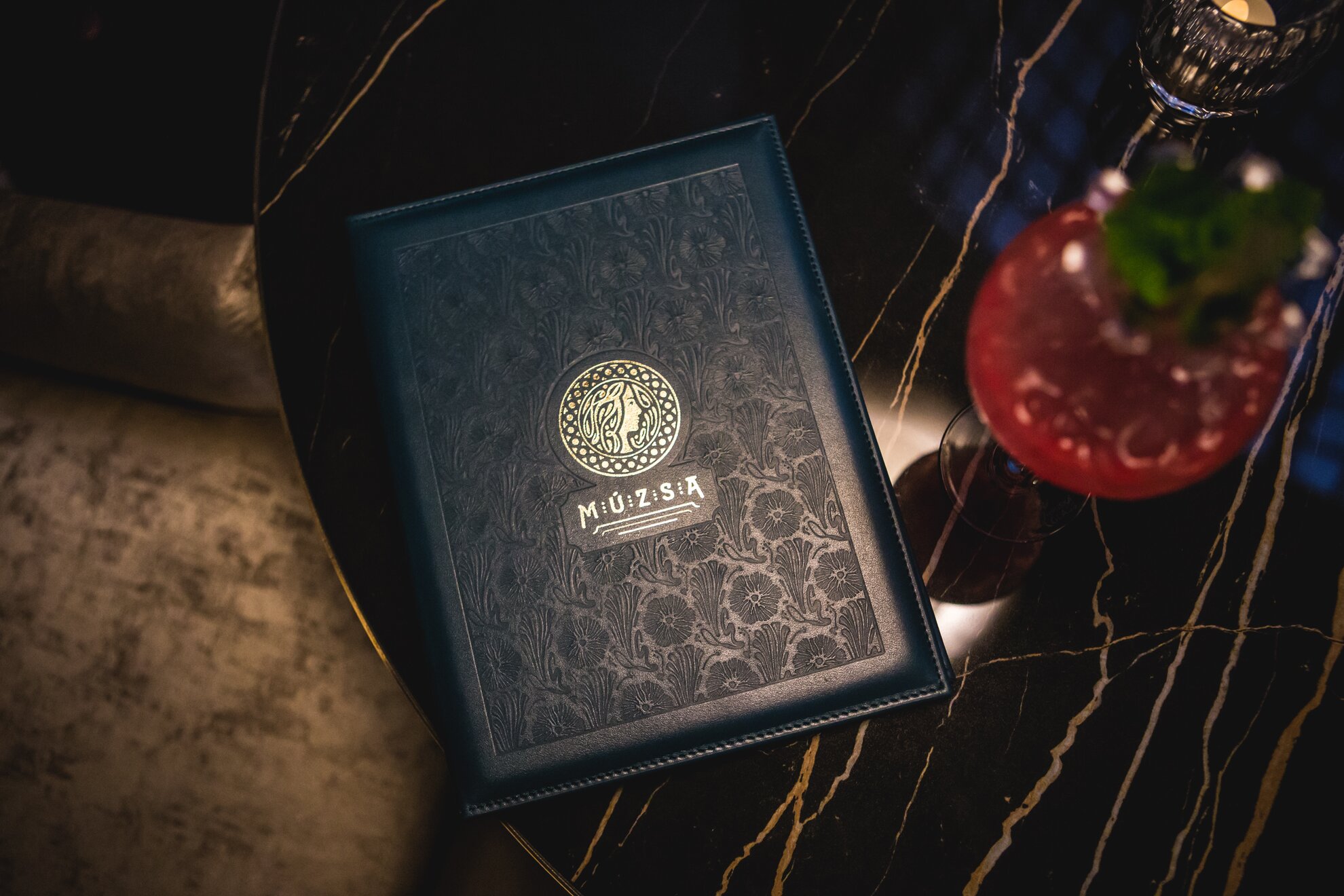
The fact that all this has been launched during a pandemic is bold, of course – April was the original plan – but fortune favours the brave. Rules of current social engagement, masks, sanitiser, shorter opening hours, are kept amid the informality.
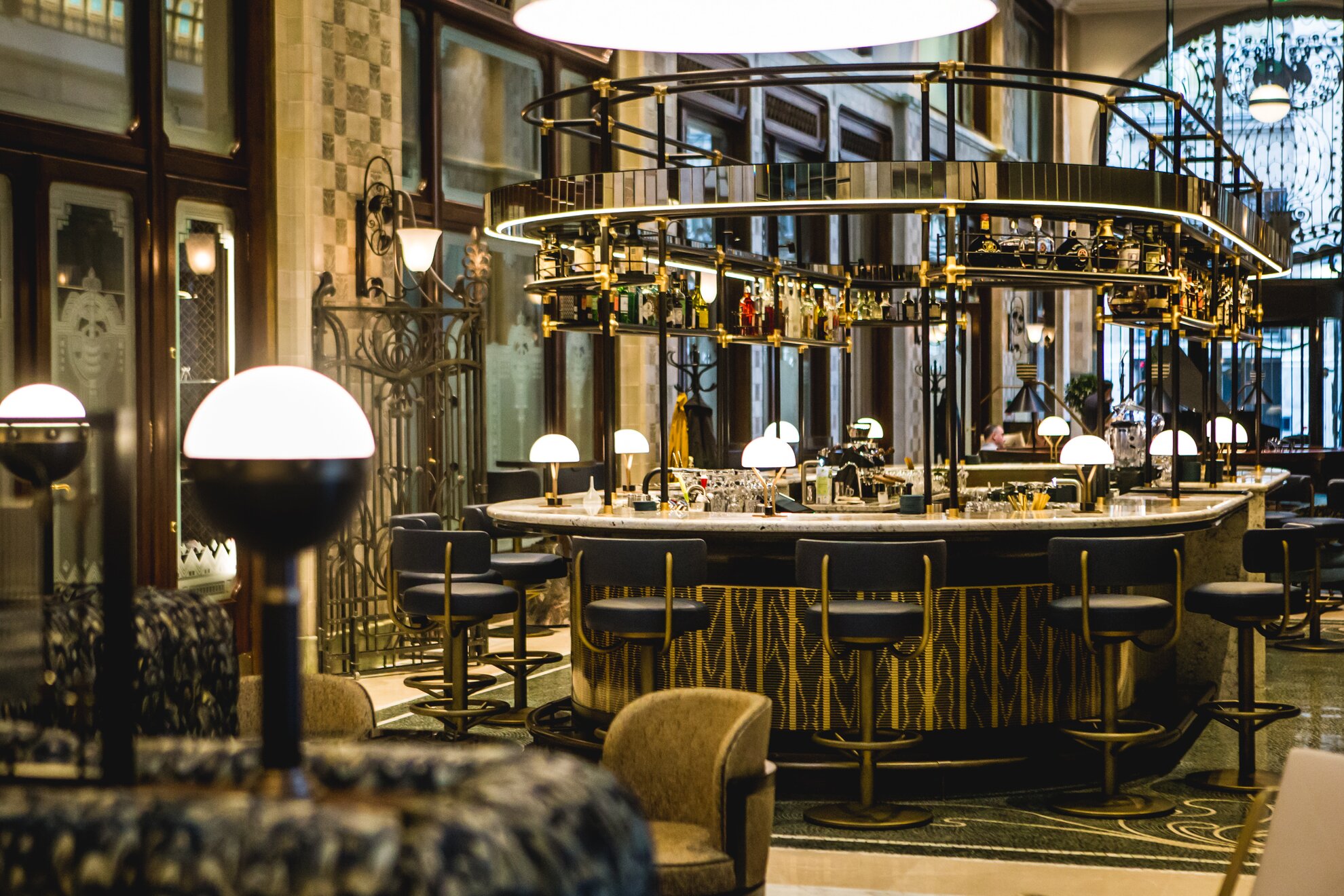
For creating a bar such as this, recreating its own history and even reconfiguring a whole award-winning lobby around it, the Gresham should be applauded. Actually, we feel like chucking the keys into the Danube.
Múzsa
Four Seasons Hotel Gresham Palace Budapest
District V. Széchenyi István tér 5-6
Open: Wed-Fri 5pm-11pm, Sat-Sun 3pm-11pm. Afternoon tea (8,900 HUF) noon-3pm
